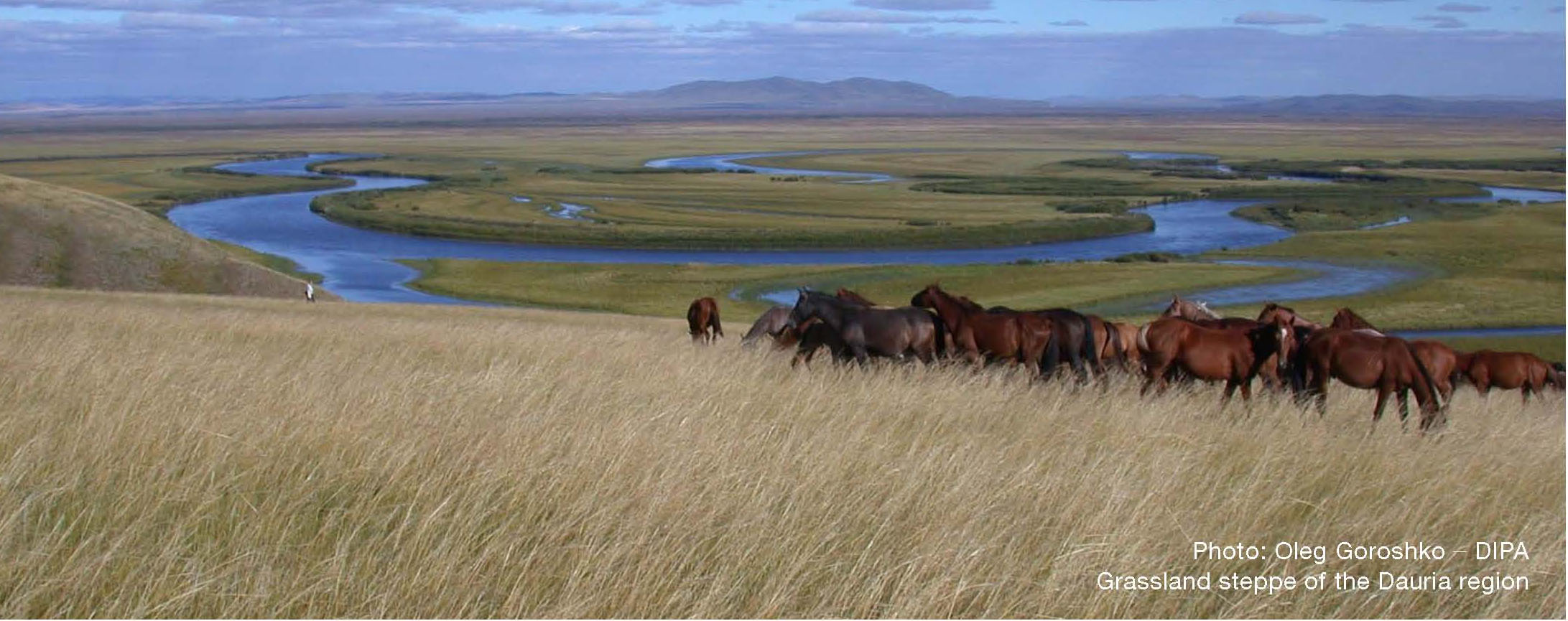The Dauria Ecoregion

Photo: Oleg Goroshko-DIPA
The Dauria Steppe of East Asia
The Daurian steppe of East Asia is a vast temperate grassland scattered with wetlands, rivers and pockets of forest. Extending over one million square kilometres, this transboundary ecoregion stretches across eastern Mongolia and north-eastern China and also reaches into Russian Siberia. The region is one of extremes – subject to severe winters, massive temperature fluctuations, and scarce and fragile water resources. The Dauria is one of the largest areas of indigenous temperate grassland that remains on our planet. For thousands of years a low human population combined with sustainable land use practices have kept the grassland intact, and hence the potential for large-scale landscape conservation in the Dauria is enormous. There is an opportunity to act now to protect this pristine grassland before it becomes degraded and fragmented like so many grasslands in other parts of the world. In recognition of the area’s globally significant conservation potential and need, the Temperate Grasslands Conservation Initiative (TGCI) has selected the Dauria region as one of its four regional priority areas for conservation.
The Dauria constitutes one of the best-preserved examples of Eurasian steppe and supports huge populations of large migratory species such as the Mongolian Gazelle. The vegetation communities that have formed here are unique and rich in endemics. The Dauria is also an important breeding and stopover site for millions of birds on several Asian flyways, and is critical for the survival of Red-crowned Crane, White-naped Crane, Swan Goose, Great Bustard and at least 15 other globally threatened bird species. The region retains exceptional habitat connectivity, essential to preserving the migratory patterns of the region’s wildlife.
Not only is the Dauria a globally significant biodiversity region, the conservation of the Dauria area is imperative to the livelihoods of nomadic herders and local communities that directly rely on its resources. With its swathes of grassland crossed by rivers, lakes and wetlands, the Dauria has been central to nomadic herding communities for thousands of years. Traditional knowledge and a common use of land allowed livestock to be moved around to find the best pasture, reducing pressure on the natural ecosystem and ensuring that the grassland recovered between grazing events. It is estimated that in Mongolia alone 60% of the local population are herders, and fewer but still substantial herder communities exist in Russia and China, meaning that the Dauria ecoregion is critical to the lives of at least 2 million people.



